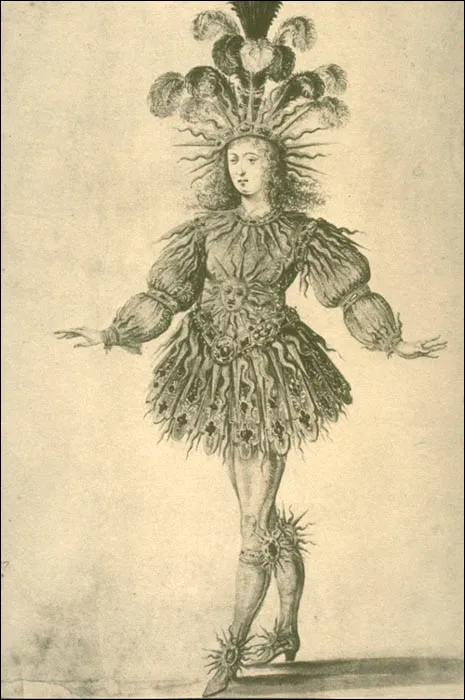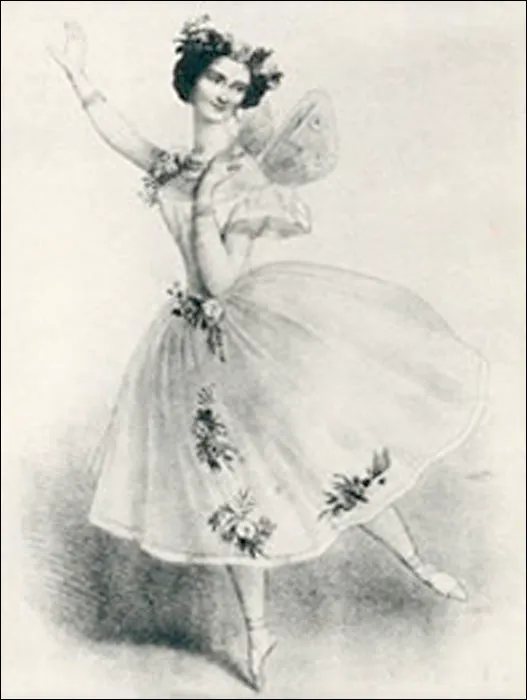IN THIS PART …
You’ve seen ballet before. You’ve marveled at its beauty and grace. You’ve wondered what on earth was going on. Now you’re about to watch it through different eyes — and maybe even prepare to do it yourself.
In this part, we ease you into this strange art form. We show you what ballet is, and even give you a little history. We tell you what you need to look good — both in the studio and onstage. And we tell you about music, ballet’s great inspiration.
This is the part where you don’t even have to sweat. (Well, except for the part about abs.) No nitty. No gritty. Just fun.
IN THIS CHAPTER
What you need to get started Dancing like a pro — for fun and enjoyment Welcome to world of ballet — a universe of beauty and grace, aerial pyrotechnics, heroes, villains, and a fairy or two. Where the sound of tapping toes melds with the luscious strains of a full orchestra. Where true love always triumphs, evil is destroyed, and everybody has great legs.
This is the world of ballet. And by the way — don’t be put off by the fact that all the guys are wearing tights. It’s art, man, art!
Ballet for Life
Whether you want to participate in ballet or just watch it, the ballet experience can excite and inspire you. Ballet is one of the most beautiful forms of expression ever devised: an exquisite mix of sight and sound, stunning aesthetics, and awesome technique.
Though the professional ballet world may or may not be for you, the practice of ballet certainly can be. Ballet can give you more strength and flexibility, better alignment, and infinite grace — for life. It can counteract the aging effects of gravity, reduce stress, and prevent injury. And until you’ve tried moving your body to some of the most beautiful music ever written, you’ve missed one of the greatest joys life has to offer.
Imagine waking up after 100 years of sleep, released from a curse, and finding your true love. You may feel inspired to attempt such superhuman feats as the one depicted in Figure 1-1 (after a good stretch, of course). In fact, you may even be exuberant enough to do it three times, like Princess Aurora and Prince Desiré in Sleeping Beauty. That’s what we love most about ballet — above all, it can bring ecstasy into your life.
In the Beginning …
The ballet moves in this book have a long tradition — longer than most things on earth. In ballet, an understanding of that tradition is extremely important. In this section, we acquaint you with the winding road that led to the beautiful art form you can experience today.
Just like music, dance has existed since prehistoric times. Rhythmic chanting — usually meant to appease the gods or to while away the time between woolly mammoth sightings — soon became accompanied by body movement. After all, what’s more natural than swaying to the beat?
Some of the earliest organized dances took place in ancient Greek dramas, which sometimes incorporated a dancing chorus. Even then, it paid to know how to move your feet. The tradition made its way to Italy, where theatrical dancing became enhanced by manual gestures, or mime. (You can read more about mime in Chapter 16.) This tradition was kept alive for centuries by minstrels who sang, tumbled, juggled, and reveled their way through the Dark Ages.
Court dancing for fun and profit
It was during the High Renaissance in northern Italy that court ballroom dancing was born. (The words “ballet” and “ball” are both derived from the Italian word ballare, meaning “to dance”.) Performed by the nobility, court dances became all the rage. They spread to France — where they reached their height at the court of King Louis XIV.
King Louis, the Sun King (or “Twinkle Toes,” as he was almost certainly not known), was an accomplished dancer himself, as you can see in Figure 1-2. He established the first official school of ballet, known today as the Paris Opera Ballet. That’s why, to this day, all ballet vocabulary is in French.
Whereas the first performers were kings, noblemen, and other slackers dancing for their own enjoyment, ballet eventually became much more structured and elaborate, demanding strong legs, great balance, and increasingly virtuosic technique. Professional ballet was born.
If you were to suddenly wake up at a dance performance in the year 1680, two things would strike you: The dancers, as they accidentally slammed into your suddenly materialized body, and the fact that everyone onstage was a guy. Ballet was for athletes; it was unbecoming (so people thought) for women to participate in such bold and daring moves.
The first women didn’t appear professionally until 1681 — and when they did, they wore big hoop skirts, high heels, and wigs. Eventually, someone got the idea that a ballerina could be much more effective with her legs visible. So beginning in the early 1700s, women began dancing in shorter and shorter skirts, and without hoops, heels, or wigs.
The Paris Opera and pointe work
The more of their bodies they revealed, the more popular ballerinas became. But in order to truly win the favor of the audience, one more element was needed. Something so strange, so masochistic, that you would never believe it in a million years. We’re talking, of course, of dancing on the tips of their toes — en pointe.
The thought behind this bizarre concept was this: If a woman could point her feet unnaturally down at a 90-degree angle and stand really high off the ground, balancing on the very tips of two or three toes, she would appear to be floating.
And that was a good thing — this was the Romantic era, and most ballets of the time involved spirits, fairies, and supernatural creatures, like women whose day job involved being dead. Floating above the surface of the stage just seemed the right thing to do.
This feat of the feet was possible with the help of special shoes, known today as pointe shoes. And the first ballerina who pulled if off was Marie Taglioni (see Figure 1-3) — daughter of a famous choreographer at the Paris Opera.
Dancing en pointe did the trick — thereafter, women not only became the equals of the men onstage, but actually dominated ballet for well over a century.
As time passed, pointe shoes became stronger and more supportive, allowing ballerinas to stay up longer and dance more complicated steps. Today pointe work is a substantial area of any balle...






